We like a collaboration, and that’s exactly what we’re doing with Aegon where we’ll cover tax topics in these video shorts. Think tax topics cut into easily bitesize videos that you can watch on the go.
Whizzing us through the tax topics is Elaine Cruickshank.

Elaine is a qualified account and member of STEP. She is Tax and Trusts Manager in the Aegon retail sales team and has been with Aegon for 17 years. She provides tax and trusts support to the Aegon retail and protection sales teams and advisers. She is Aegon’s tax and trusts spokesperson – writing articles, delivering webinars and presenting at seminars.
There’s five videos to dive into covering:
- Capital losses
- Taking money from a bond
- Shares and capital gains tax
- Scottish rate of income tax
- IHT planning
So, don’t delay, get watching and if you find these useful let us know and we will make some more.
So what can you expect from a technical short?
Here’s Richard to explain what you can expect from this series.
Capital losses with aegon
Taking money from a bond
Shares and capital gains tax
Scottish rate of income tax
IHT planning
In 2013, we set out with a simple ambition: To create an informal gathering designed by paraplanners for paraplanners to exchange views, learn things, fix things and share things.
Taking inspiration from the unique quality of teepees to create space for conversation and cooperation in-the-round, we settled on the idea of staging an unconference event held in rolling countryside under open skies – in teepees.
And because of the teepees’ association with Native American tradition, we named the event the Paraplanners Powwow. The language and imagery and props and furnishings we adopted drew on the depictions of the 19th century United States popularised in ‘Western’ films and TV.
Despite being intended as a one-off event, the organising principles adopted for that original event proved compelling.
So much so, in fact, that paraplanners who attended the very first Powwow decided to organise their own events: Powwow Up North was born, and then Powwow Down South, and then Powwow North of the Border, and so on and so on.
The Paraplanners Powwow name stuck and so we stuck with the whole Powwow theme.
But in recent weeks we’ve had plenty of reasons to think again about persisting with the ‘Powwow’ theme – not least because we received an email challenging us directly about our adoption and use of the powwow idea, naming and associated branding.
To be confronted with the idea that our events contribute to cultural appropriation of Native American tradition and, in doing so, perpetuate prejudice has been upsetting. And we know that participants in our events would feel exactly the same as us.
But as organisers, we should have recognised the harm that the adoption of the powwow would cause. We didn’t and we are sorry.
What we can do is make changes now.
We have already begun to take steps to remove the Powwow and Howwow names and end the use of imagery and props that contribute to cultural appropriation of Native American tradition.
That’s why, from now on, we’re the Paraplanners Assembly.
And although we’re changing our name, the idea that’s made our events and the community that’s flourished around them remains exactly the same: To create informal gatherings designed by paraplanners for paraplanners to exchange views, learn things, fix things and share things.
We’re learning from our mistakes. We’re fixing it. And – today – we’re sharing our news.
We’ll be publishing details of new events coming up and will see you at an Assembly soon.
What all Paraplanners should know about estate planning
On 11th June, John Bunker joined us for a Howwow special on estate planning basics, focussing on the processes and procedures to be aware of. Plus we dipped into the special measures taken during COVID-19. John delivers legal and tax training, as well as consulting for Irwin Mitchell.
Replay, slides and a couple of questions we didn’t have time to get to
If you missed it or want to watch again, you can watch the replay here. You can also get a copy of John’s slides here.
There were two questions that we didn’t have time to get to on the show but John has taken a look at them and answered them here. We’ve copied and pasted the questions straight from the ‘Ask a question’ area of the Howwow. You can get full context by watching the replay.
Question 1
How is the residence nil rate band impacted where the main residence was owned as tenants in common 50:50 and the 50% paid out to sons, prior to RNRB. Widow has downsized to a property which is now worth less than her own RNRB. Is the deceased’s RNRB lost in this case?
Answer 1
Yes but this isn’t straightforward. There are some principles:
- If a deceased spouse left half to the sons, or that was done from his estate, then the widow’s half share is in her estate and she has a potential NRB of her own plus possibly part TNRB to transfer if the half share of property is less than value of spouse’s NRB.
- If downsized since July 2015, she can look at value of earlier half share of property, and claim a “downsizing addition” on top of the RNRB for the house she has.
- If the spouse died pre RNRB, she can claim TRNRB and may have more than one RNRB if sufficient value in previous property.
- RNRB will be lost if the value of her current property and any downsizing addition is less than the full RNRB available.
Question 2
Can you use a DoV to remove/change benefits which were to be paid to a minor, even if you are looking to give them a share of a house, as an alternative to another asset, to use a RNRB?
Answer 2
You cannot do a DoV to take away anything from a minor. If that minor is the right beneficiary e.g. child or grandchild, and has the right trust in the will (e.g. bare trust or 18-25 if a child) so closely inherits, it does have possibilities.
- If child say has half estate and house worth £500K, their half = £250K and could use £175K RNRB. It doesn’t need a specific gift; it could be just a share of the estate.
When Lindsey Gedge contacted us before a recent event to let us know that she has a hearing impairment, we learnt some valuable lessons on making the Powwow accessible. Lindsey kindly offered to share her thoughts on making events easier for those with hearing impairments. Over to Lindsey 😊
My experience at the Howwow
- Make no assumptions – it was instrumental to me that I was asked by the organiser if I would be comfortable working in a group and this made me feel confident in raising my concerns. Talking this through made me realise I could try using my hearing pen in a slightly different way than I have previous experience of.
- Make it really easy for people to let you know in advance so you can plan – I was introduced to several people who would be leading the groups. This gave us both the opportunity to voice any queries before the day started and made it feel less intimidating to me asking for extra help.
- Never underestimate the desire in groups of people to make sure everybody’s experience of an event is a great one – I need not have worried. I was absolutely blown away by how kind people were. I really felt I was part of my group and I was able to take lots of new knowledge and ideas away with me that ordinarily I would not have been able to do. It was refreshing to have felt included, instead of isolated.
- The technology available – the hearing pen was a revelation to everyone! I was able to apply for a grant from the DWP who paid for both the pen and the training. You can find out more here. I wish I’d had one years ago but it means I can now engage and participate with groups of people, whereas previously I wouldn’t have been able to.
Top tips when communicating with a person with hearing impairment
- Please catch our attention before speaking
- Please speak clearly, and, ideally, project your voice (rather than shout)
- Please understand that having a hearing impairment is exhausting and tiring, therefore our concentration levels do get affected
- Above all, please be patient
I would like to take this opportunity to say thank you so much to everyone for their kind assistance. It has given me the confidence to use my hearing pen again, especially if it is a Paraplanners Howwow event. I very much look forward to attending next year!
Thanks again for sharing Lindsey. See you at an event soon 😊
Following the ‘This time it’s personal’ Howwow in November, we asked Chris Hindle, Director and Paraplanner at Frazer James and outsourced Paraplanner to share his thoughts. It was Chris’ first Powwow event, and our first time focussing solely on soft skills, so his insight is doubly interesting. Thanks for sharing Chris 🙂
Do paraplanners need soft skills?
That was the question I was asking myself after a colleague suggested I attend an all-day course to develop my soft skills.
An introvert by nature, I was initially resistant to the idea. Why do I need soft skills training, surely this was the domain of advisers?
The thought of a full day workshop on soft skills development made me slightly uncomfortable, which in itself told me that it was probably a good idea to attend!
So I signed up.
My first ‘Powwow’
Having not previously attended a ‘Powwow’, I wasn’t quite sure what to expect. Would it be leading from the front like most workshops, or would it be something different entirely?
The first thing I noticed is the sense of community. This was an event organised by paraplanners, for paraplanners. We were coming together to learn, fix and share in a non-judgemental way.
A loose agenda kept the day together, but the event was largely driven by the needs of the attendees. We were treated as participants, not delegates.
Why paraplanners need soft skills
Despite initially being resistant to the idea, I came around to believing that soft skills are as much the domain of paraplanners as they are of any other role.
Whilst the role of ‘paraplanner’ differs widely between firms, one commonality is that in all firms paraplanners interact with other people. This holds true for both in-house and outsourced paraplanners.
Being able to communicate with clarity and confidence, is the key to developing and maintaining successful relationships.
The feedback from advisers confirmed this:
What I learnt
Although there was lots to takeaway, there are three things that really stuck with me:
- Giving effective feedback.
I’ve been guilty of being very direct with my feedback. For some people this can work well, but it’s not for everyone. It can damage relationships and make people feel undervalued.
In the future, I will ask the recipient how they like to receive feedback. Everyone has a different style, so if we want to get the most from people, we need to communicate in a way that suits them.
- Listen, don’t speak.
Sometimes, I prepare my response whilst somebody is still speaking. I’m not actively listening to them; I’m just waiting until it’s my turn. It pains me to write this, but it’s true.
In the future, I will work harder on actively listening to the other person. If something comes into my head, I’ll write it down. This keeps my head clear so that I can focus on what they are saying.
- Enjoy the silence.
Silence makes me uncomfortable, so I fill it the only way I know how, by filling the space. This was made painfully clear when I listened to recordings of telephone conversations I have had with clients.
In the future, I’m going to give people the space to think. I will keep in mind that they may not have had the time to think through the information I’ve just provided and need the space to do so.
What next?
It’s clear that paraplanning has come a long way in a short space of time. It’s also clear that there is still a long way to go, particularly around soft skills training.
Personally, I’m going to be spending 20% of my continuing professional development on developing my soft skills.
I’ll be doing things like:
- Listening to voice recordings from conversations I have with end clients (as painful as that is)
- Completing a reflective statement and using this as a key part of my developmental review meetings
- Attending more courses like the ‘this time it’s personal’ Howwow
How about you? Do you think soft skills training is important? What will you be doing to improve your soft skills?

On the 12 September 2019, paraplanners gathered in a teepee to learn, fix, share on a host of topics. Given that there was so much information to scribble down, the jolly folk that hosted the campfires and pick n mixes have sent over all their links and resources. So we’ve popped it all down in a handy link pack.
However, before you get click-happy, here’s a few snaps from the day…

Paraplanning tips campfire with Aleks Sasin and Jackie Manning
A number of you asked for a list of the books mentioned in the session and here they are:
- Getting Things Done – David Allen
- Deep Work – Cal Newport
- The One Think – Gary Keller
- Eat That Frog – Brian Tracy
The Mac app mentioned that focuses on the active window only is HazeOver.
Bonds vs Collectives campfire with Neil MacGillivray and Andy Marshall
The lovely folk of James Hay have sent over a copy of Neil’s presentation on Investment Taxation, plus here’s some handy links on capital gains tax,offshore bond guide and offshore single premium bonds.
CRP campfire with Jonny Stubbs, Martin Lines and Tim Coverdale
Here’s Jonny with more on the Withdrawal policy statement.
Who created it?
Although I can’t take all the credit as it was a mish-mash of various examples I’ve found over the years on the t’internet and using the same framework we use for our Investor Policy Statement. If anyone’s interested… No? Oh, just me then… This is apparently the guy who first came up with the idea for a WPS.
What it’s for?
It helps a financial planner to set a pre-agreed framework/mandate with a client for how they plan on withdrawing money from their various assets to meet their income needs after they stop receiving income from employment. It also sets out in advance what action the planner/client will take in the event of planned and unplanned events e.g. when and how should income be adjusted in the event of market volatility, major crash, inflationary pressures, unexpected expenses, poor performance etc. The idea is that it is reviewed each year at the annual review and a new copy signed together with a record of any tweaks or changes made to the document.
Any health warnings?
The example I’ve provided is just that, an example, and anyone using it should make sure it is personalised to their particular firms views, compliance, and client circumstances and objectives etc. It’s also not a fire and forget solution. The power of it comes from revisiting it every year with the client and getting them to re-sign it to confirm their understanding. Kinda like ‘a (financial) plan on a page’.
Useful links
- From the horses mouth
- A great overview of what suitability really means here
- Some great material from Just on all things CRP including practical examples
- Institute and Faculty of Actuaries: ‘Can we help consumers avoid running out of money in retirement?’
- The Yin and Yang of retirement income philosophies
- Good general overview of managing drawdown here
7IM’s Retirement Income Service
This link provides technical insight into why they follow a “bucketing” approach.
Financial Wellbeing ‘Pick n’ Mix’ session with Chris Budd
Need a reminder of the key elements of Chris Budd’stalk on financial wellbeing, then look no further than here.
Investment Research ‘Pick n’ Mix’ session with Nicki Hinton-Jones and Guy Anderson
Nicki Hinton-Jones of XPM Consulting’s slide from the investment research ‘Pick n Mix’. To find out more about Nicki and her work visit her at xpm-consulting.com
The slide lists the four key areas of due diligence research for investment products and services.
Octopus Investments Handouts
Just in case you whizzed past their handouts here’s the adviser gap report and the Octopus IHT intergenerational research report.
Nathan Fry Notes
Powwow regular, Nathan Fry has very kindly sent us a copy of his notes from the day too. Have a read of them here.
Want some more Powwow in your life? Then check out our upcoming events.
We were back at Aegon’s offices in Edinburgh for our fourth Powwow North of the Border, no scones this time, but lots of chocolate and sweets.
Topics
It was difficult to choose from the great suggestions raised in the powwow survey, but after much soul searching, we settled on:
- Due diligence (with the help of the lang cat Steve Nelson)
- Cashflow – because who does not like cashflow
In addition, we helped use the power of the hive mind to help Aegon with their retirement proposition development.
Chat on the day
After an intro from the team at Aegon, we dived right in to due diligence.
This involved looking at the various processes we all follow, key parts of which are:
- Who it is for:
- Client segmentation
- PROD requirements
- What it is for – products, including:
- EIS/VCT
- Platforms
- Tools
- Back office systems
- How we do it – the tools:
- Micap, Allenbridge & Martin Churchill were all mentioned for tax efficient products
- The Langcat directory – Steve was very restrained and left it to the rest of us to say how useful their research is
- Defaqto for just about everything
- Synaptic for some things
- And FE Analytics, because who does not love FE for fund research
- The Challenges – what we find difficult
- Keeping up to date
- Compliance
- Consistency – everyone agreed that Platforms made this difficult as MIFiD II charging is different depending on what platform you use. Best endeavours are key!!!
The discussion then moved onto cashflow with a poll on who used what, with Voyant being the most popular followed by Cashcalc and Xtools (within Xplan). No one mentioned Truth (the first seminar this has happened).
We all agreed that assumptions were key to a “good” cashflow but there were different approaches around the room with some firms sourcing this from Dynamic Planner, while others went for a different approach based around a 5% default growth rate.
Everyone agreed that it was important to build in market falls to make the plan more robust.
Cashflow was used for many scenarios but DB Transfers and drawdown were popular, with a couple of people using it for protection.
Paraplanners built the cashflow across most firms but it was mainly advisers who presented this, although several people had direct experience of doing this.
A discussion then arose around stochastic modelling, safe withdrawal rates and the potential for misunderstanding by clients on how “safe” this was.
We all had different approaches but agreed there was significant scope for clients to misunderstand how safe this was. Royal London was mentioned as having a good tool to help with this.
After a brief break (more chocolate) we resumed with a segment on the future of retirement from Aegon, where we looked at how retirement has changed since pension freedoms and how most people are taking benefits.
The key part of this is that there needs to be innovation in the industry; however, there is little consumer demand at this time.
A market correction may change this as there is no appetite for this when all is going well. This changes when things go badly as people start to look for alternatives when they have lost money (which is exactly what they should not do).
After a brief discussion on the different income options the Powwow was brought to a close with thanks given to all the sponsors, especially Aegon for hosting us.
Everyone was encouraged to look at the Big Tent as it is where paraplanners help each other, and to have a look at the previous Howwows online.
We’re hoping our next Powwow will cross the M8 to Glasgow and we’re looking forward to meeting new paraplanning groups.
On a sunny Thursday in September, and for the sixth year running (!), paraplanners gathered in a teepee in rolling countryside to learn, share, fix and exchange views. Here’s a few snaps from the day taken by our photographer, Ady Kerry.
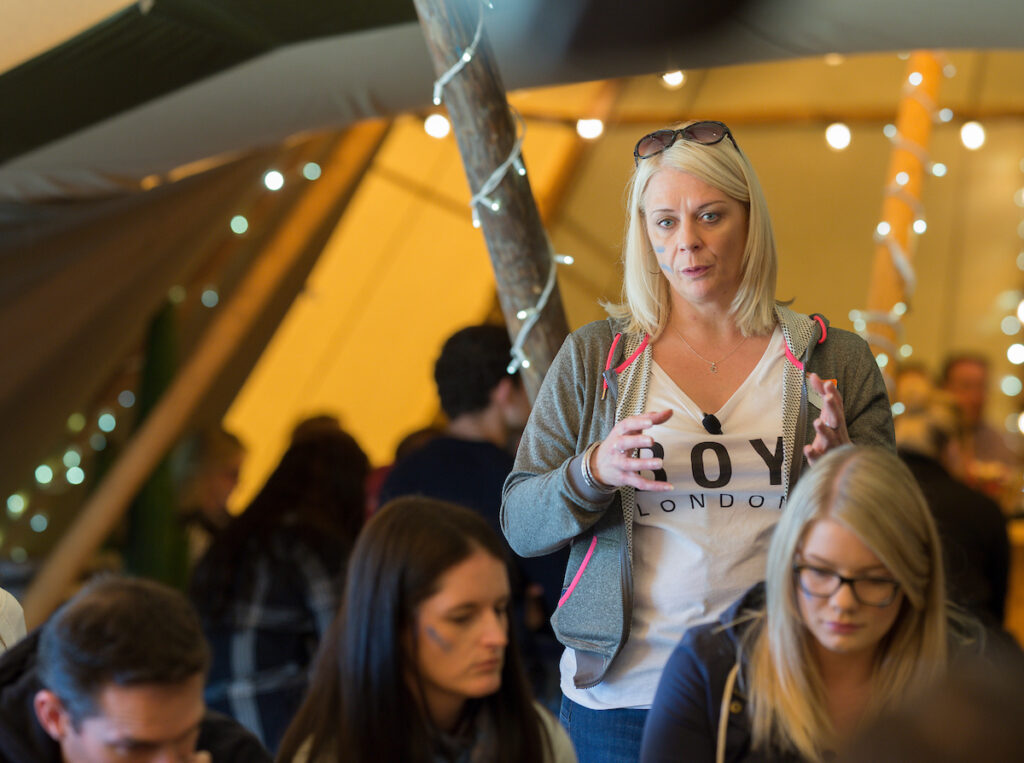
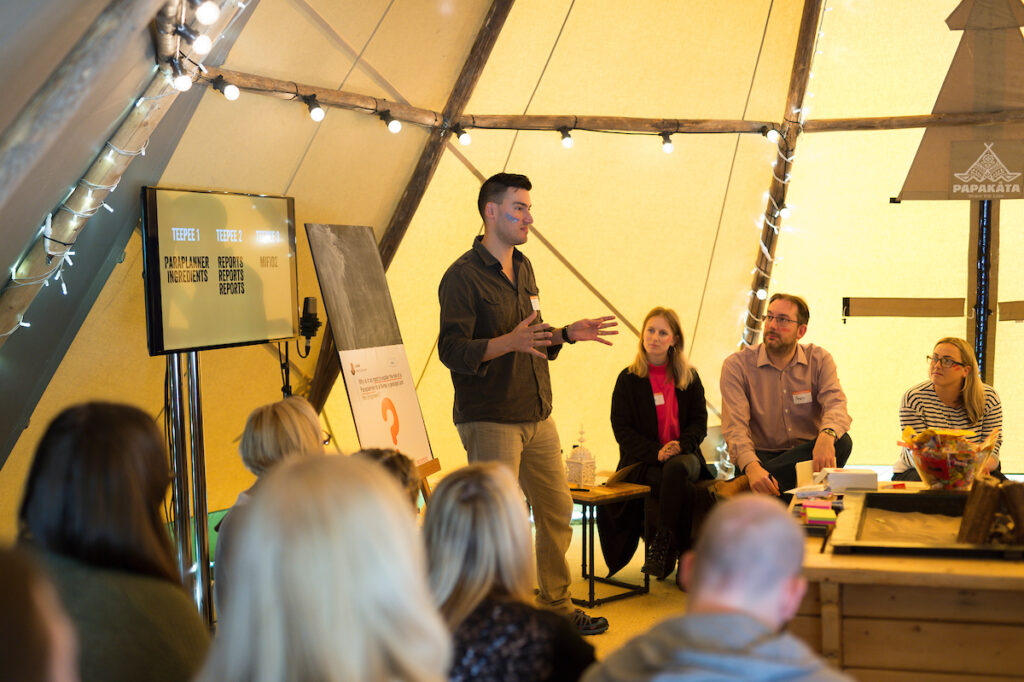
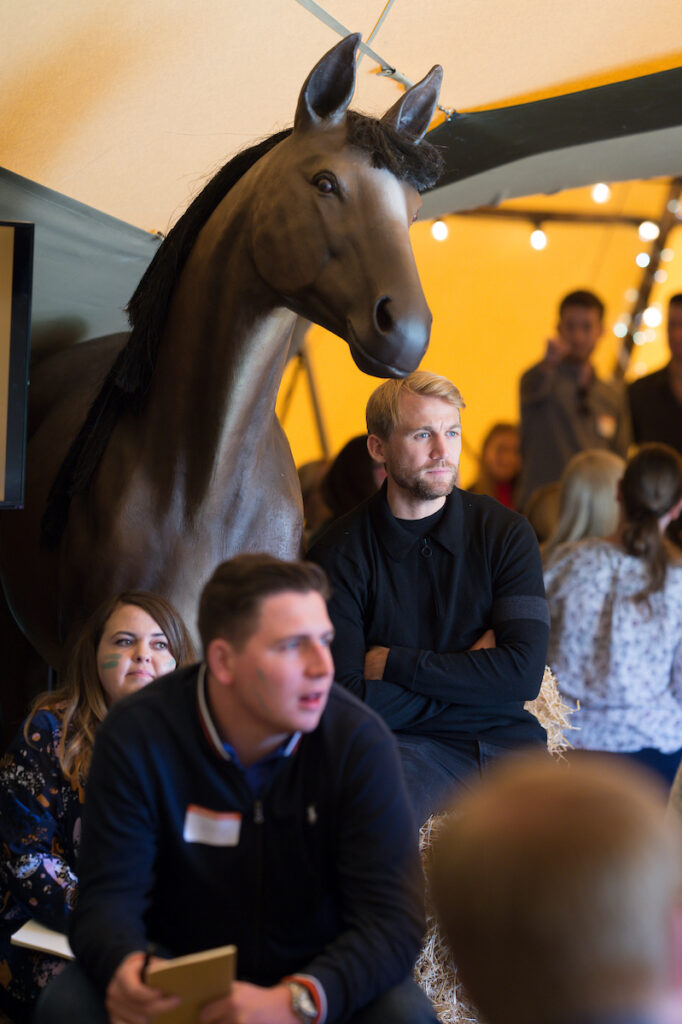
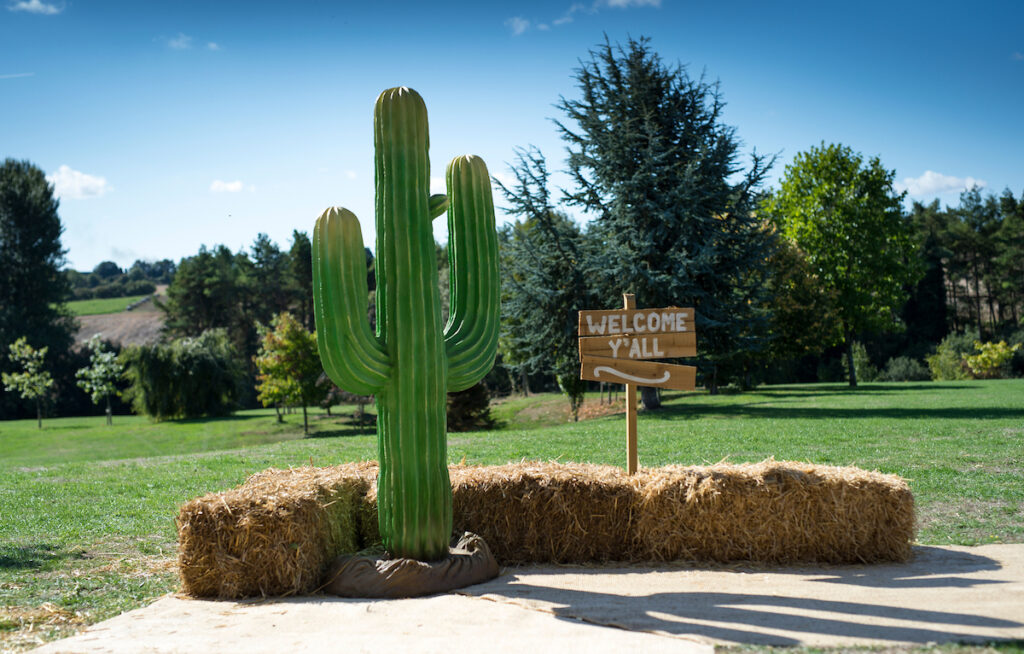
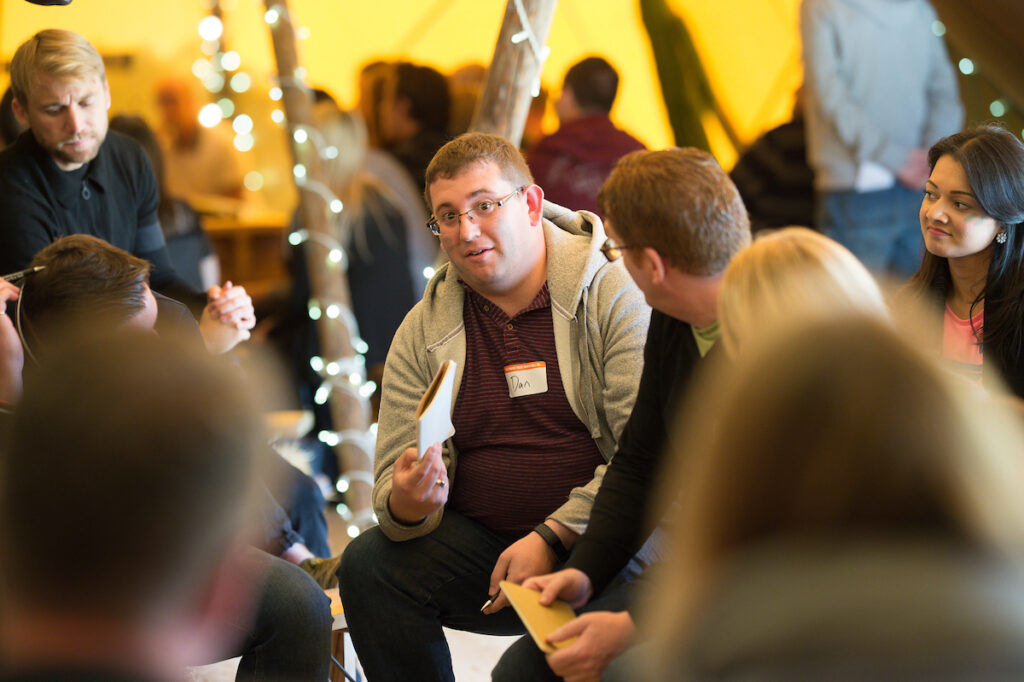
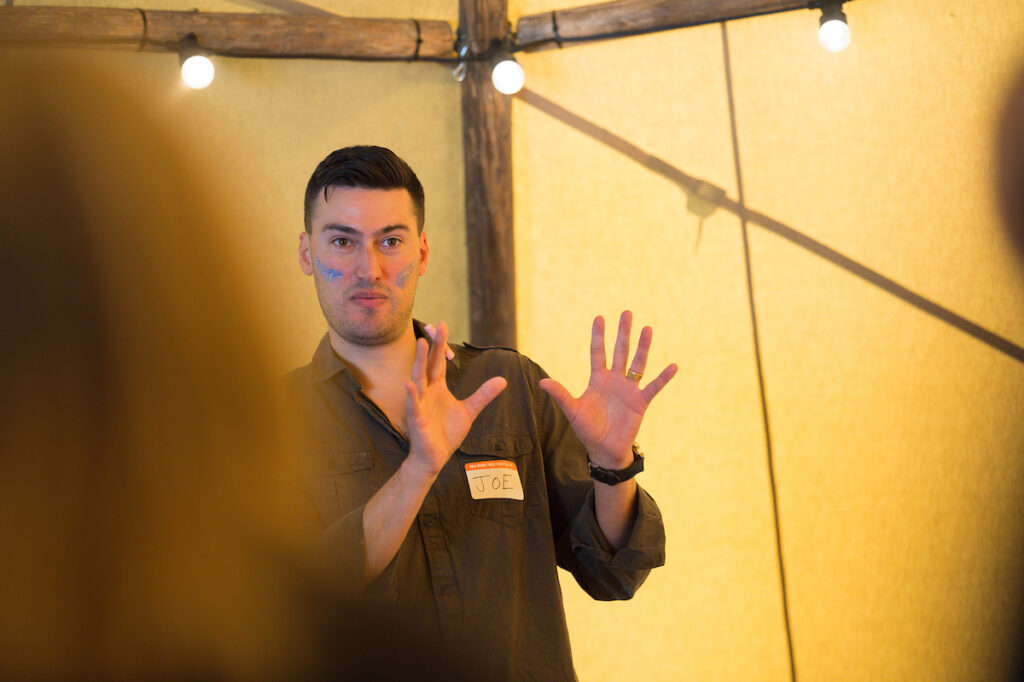
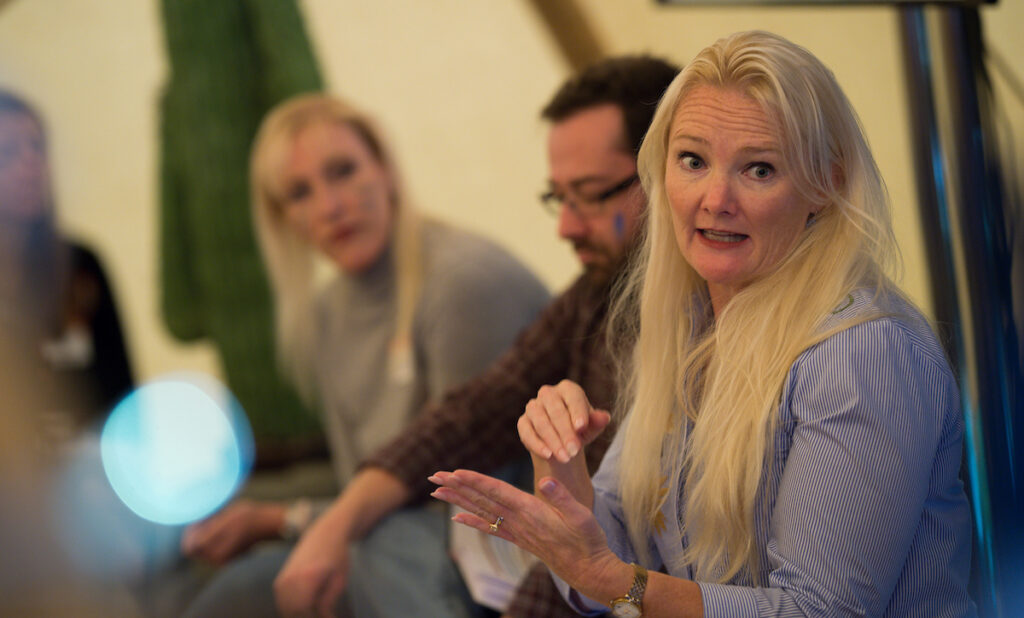
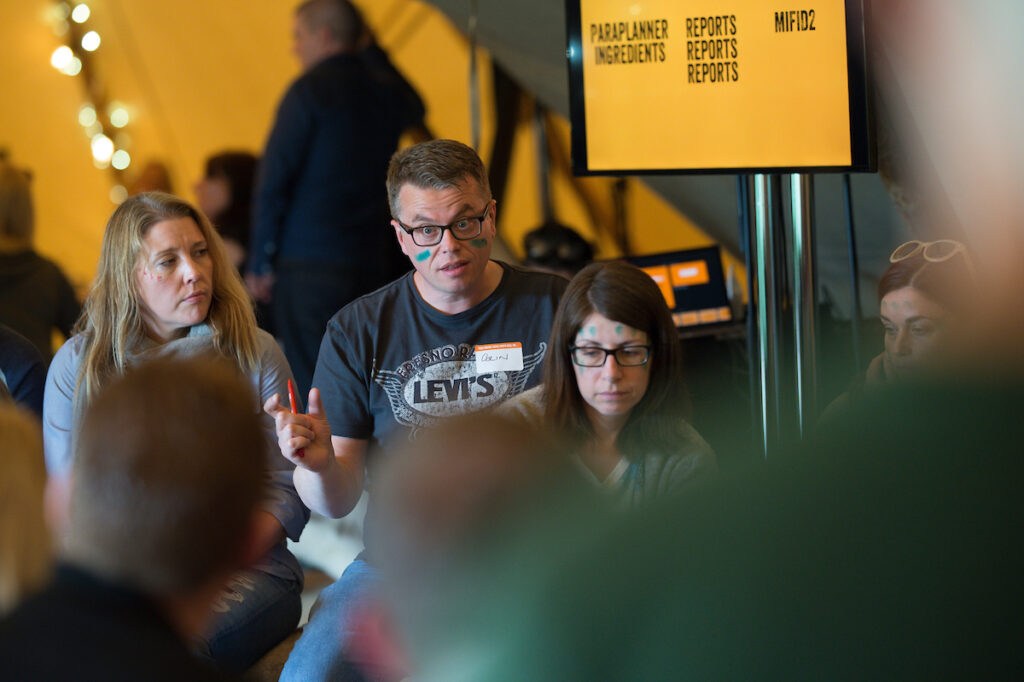

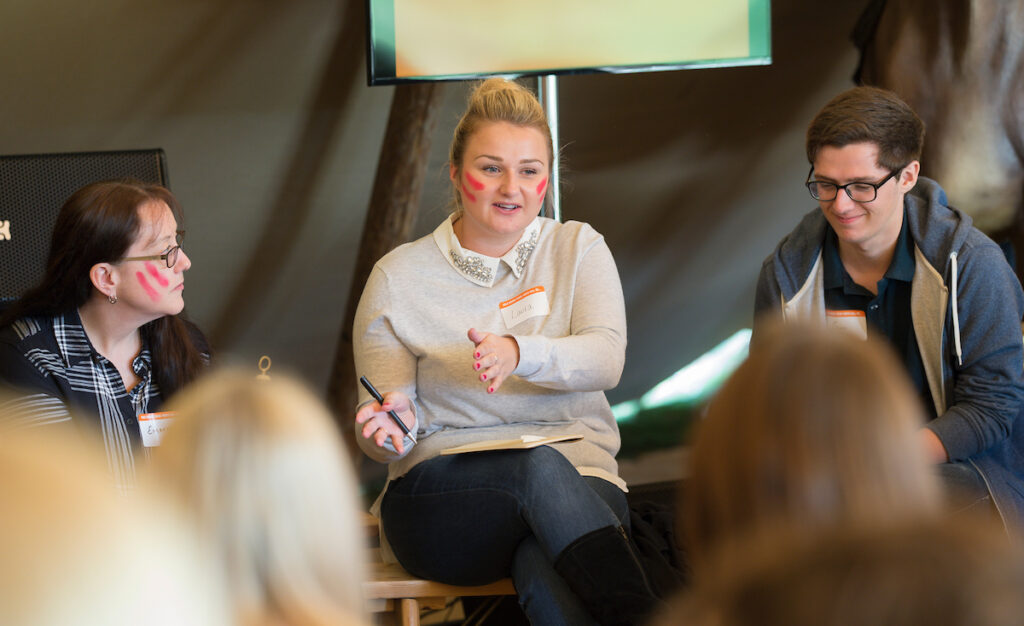
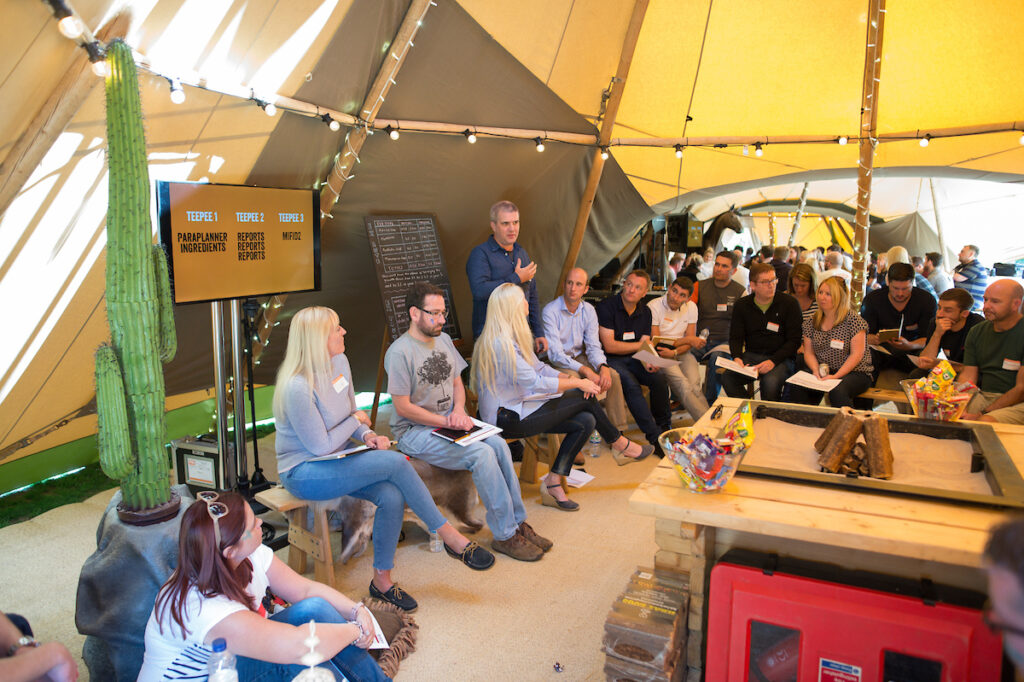
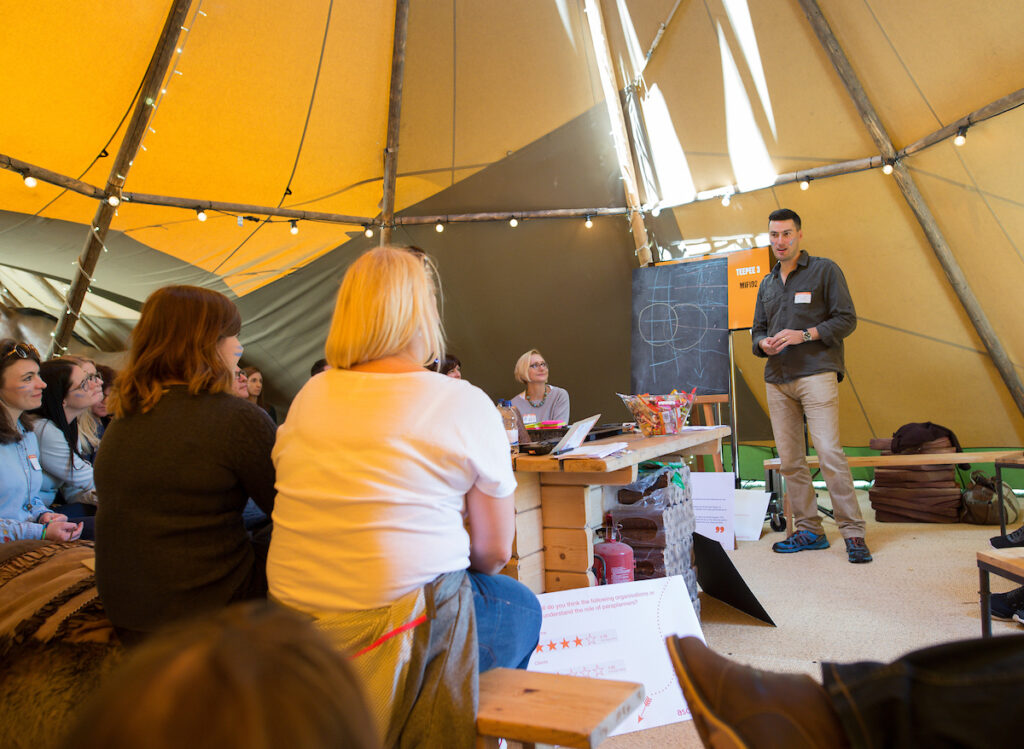
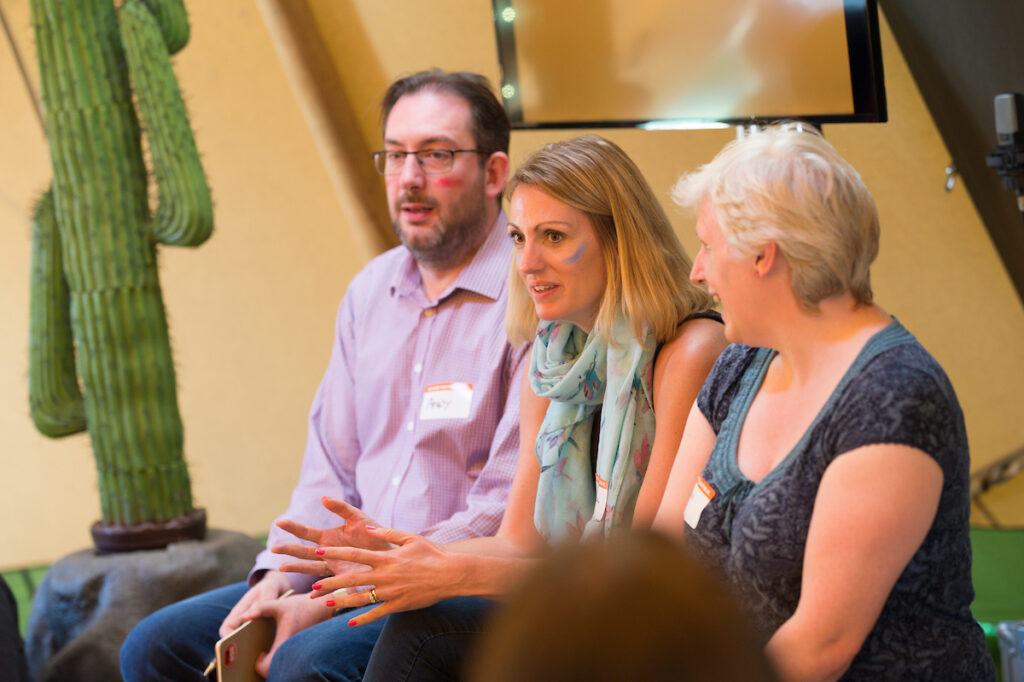
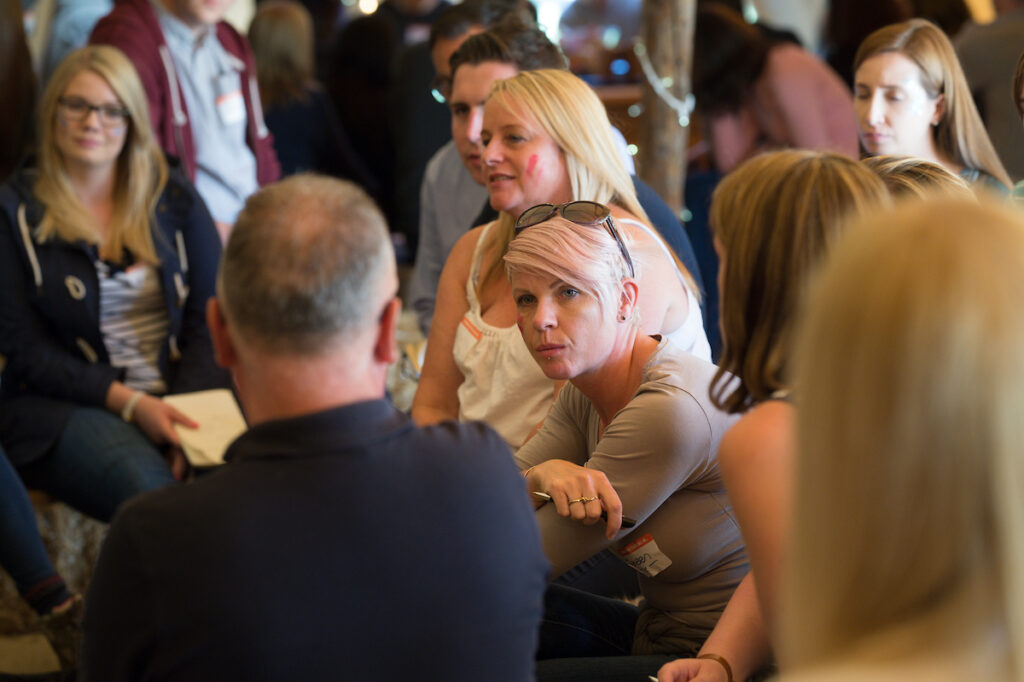
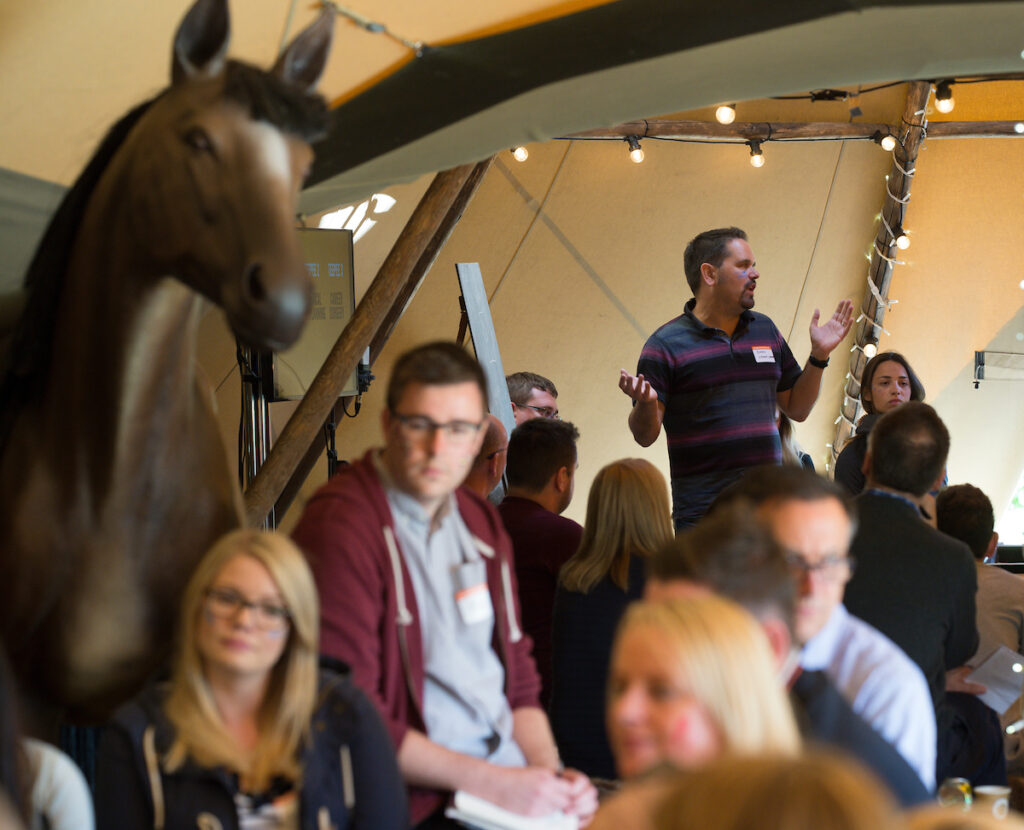
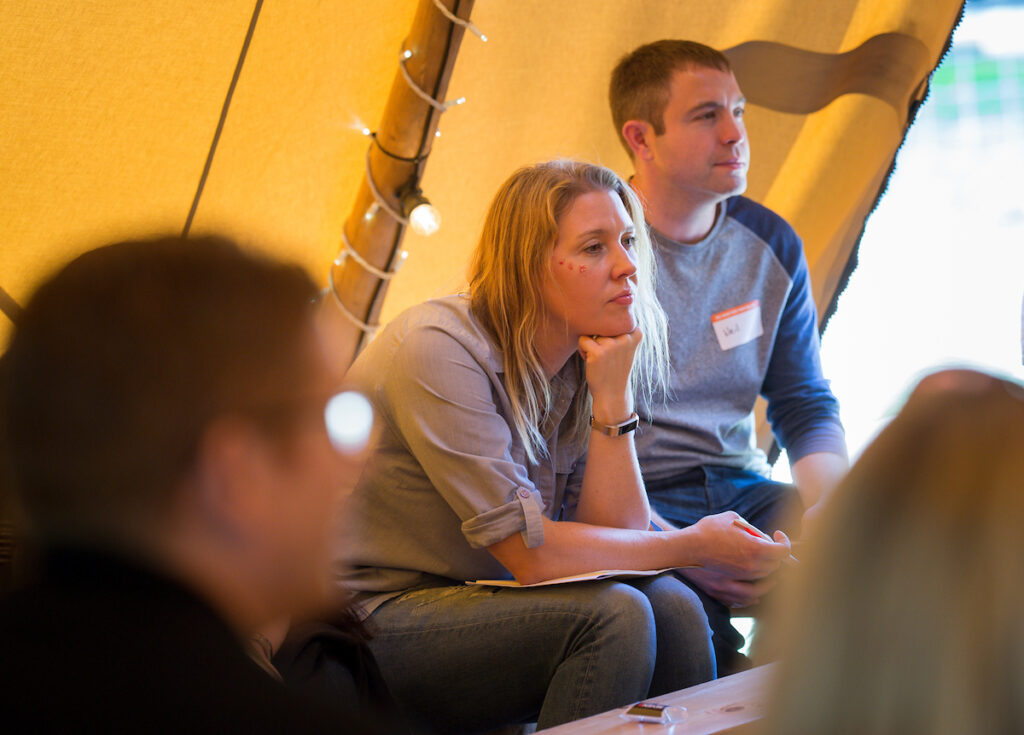
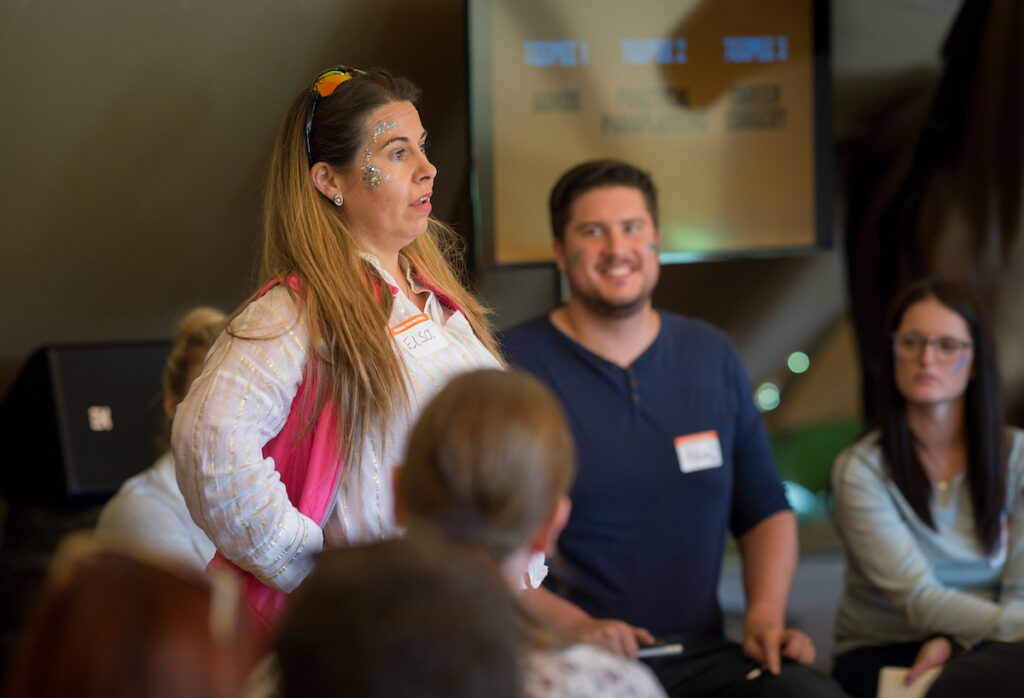
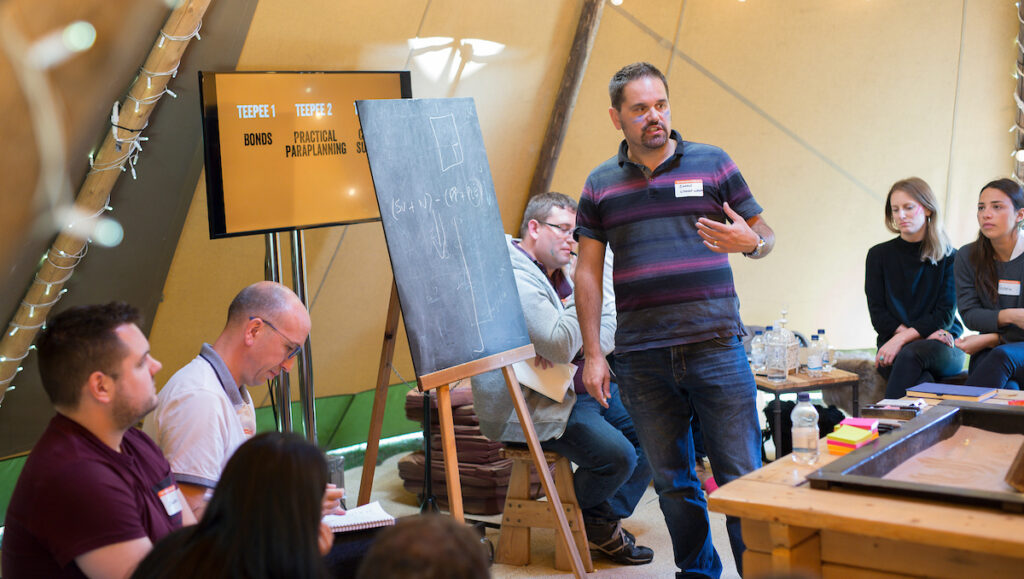
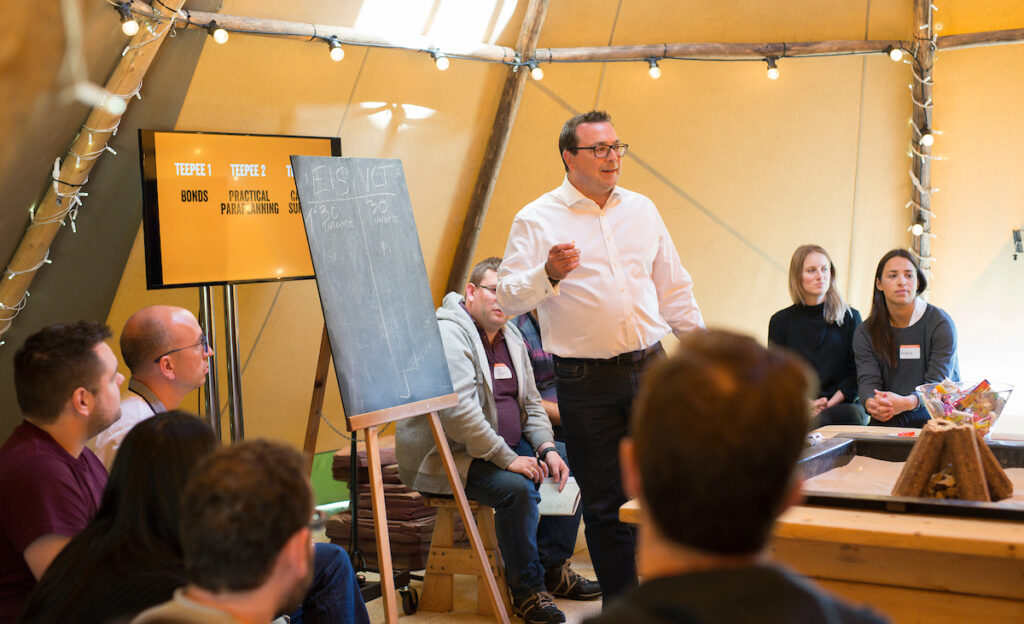
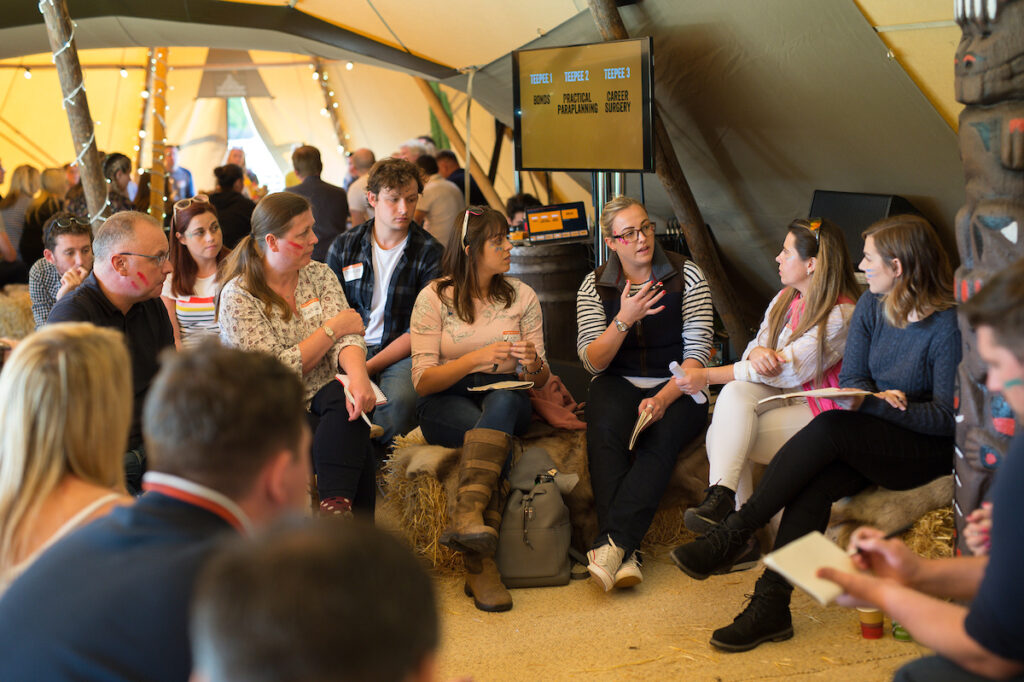
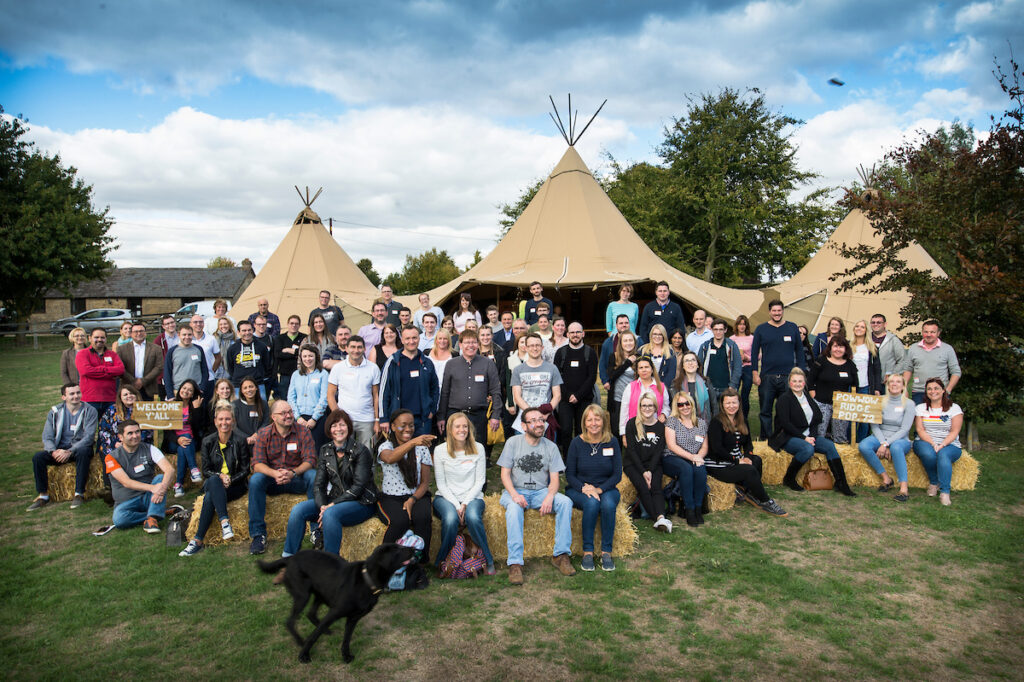
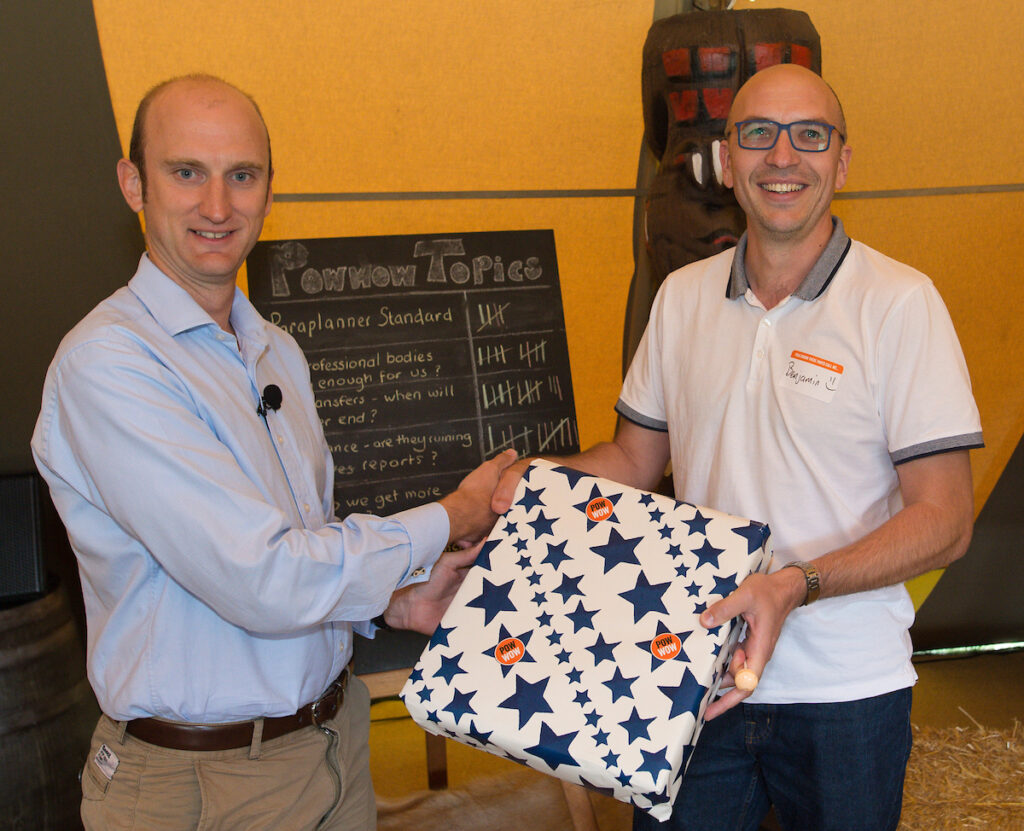
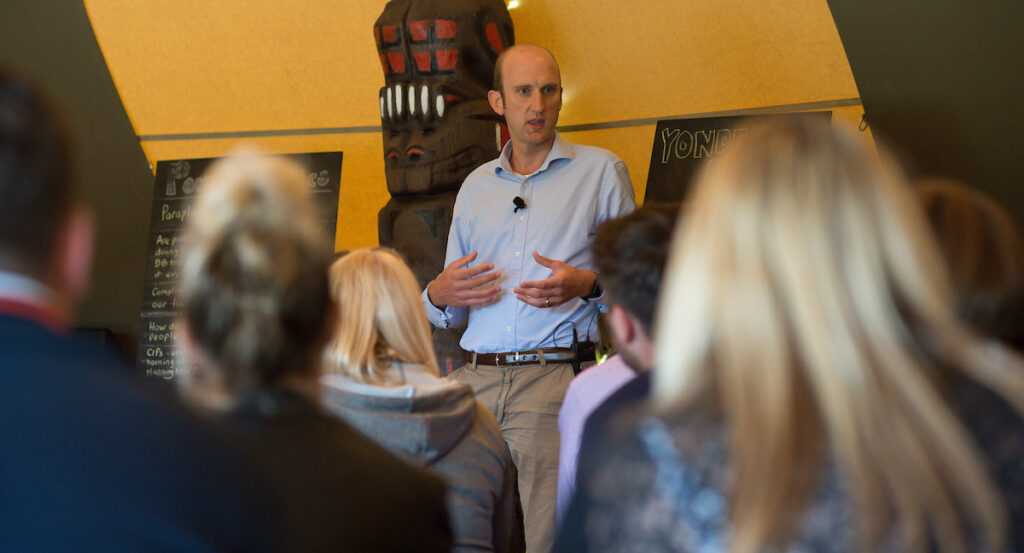
By Rachael Hurdman – Business Coach and consultant, Founder of Arch Inspire
Further to the July Howwow on building and managing paraplanner teams, here is a summary of the key themes we discussed, which I thought would be helpful for you all.
The purpose of paraplanning in your business…
- As a Paraplanning Manager it’s crucial that you can articulate to clients and your business the value that paraplanning specifically brings. This will also help team members understand how they contribute to the overall purpose of the team
- As a manger define and share how you can best add value to your team and the wider business – be clear on your core strengths and where/how you can make the difference. This will support team members to understand how they can best work with you. This needs to be two-way so ensure you spend time with team members to explore the value they add and where/how they feel they can make the difference
- Define, document and share the purpose of paraplanning together as a team and share this throughout the business – the outputs should also inform key messaging to clients about the client experience and how paraplanning will specifically touch and benefit clients
The Player/Manager dynamic
- If you have defined and shared how you can best add value as a Paraplanning Manager, this will support you to start to define the balance between managing/leading/client delivery – this will change and evolve over time but accept that it will be difficult to carry on doing everything you did before you became a manager and be open to the change ahead
- Embrace and enjoy that a core part of your role is to develop and coach others to be able to deliver exceptionally well for clients. Many managers and leaders enjoy this aspect more and more as they develop their skills. It also empowers team members when you can show you trust them to deliver and work with clients you once looked after
- Keep your hand in and be prepared to still ‘do the doing’ – whilst the amount of client work you do may reduce, work hard to keep your knowledge fresh so you can practice what you preach and support the team. Be honest if you feel someone else in the team would be better placed to take on a specific piece of work due to their technical knowledge or skill – you can still support them in a mentoring capacity
- Be receptive to feedback as a manger and leader, you can and will learn a huge amount from your team members – people respect those that willingly ask for feedback on their own performance and act on it regardless of the position they hold.
Assert yourself and the team
- Refer and feel free to use the contracting template to support and develop new and existing relationships both within your direct team and across the business
- Get your contracting clear at the outset in-order to control resources and workflow and re-visit the contracts you have in place regularly – remember great contracting is two-way and definitely not a list of demands flowing one way
- Invest time with your team to develop their contracting skills – mentor and coach them in this area and review examples where it has gone well/not so well to build on the skills continually
- Assume your position as both a Paraplanning Manager and a Paraplanner – respect your role and the value you bring in the same way, you value other roles within your business
- As a manager ensure you are clear on the level of autonomy you have to make decisions/enforce changes – work closely with your own manager to ensure that you are backed 100% when you have to push back or make the tricky calls
Communication, Communication, Communication
- Speak regularly with team members and meet whenever possible (if face to face isn’t possible use technology to see each other)!
- Consider a weekly success/learns/concerns session
a) Successes – capture and what what’s gone well and the resulting impacts
b) Learns – ensure all team members are sharing learns to support each other and work as effectively and collaboratively as possible
c) Concerns – ensure there is open dialogue where people feel comfortable to share concerns/issues to get support and help from the team (this doesn’t happen enough in businesses and can result in conflict, tension and stress if things are left unsaid for too long). Encourage and promote a culture where concerns and problems are shared openly
- Never, ever presume anything and distil this message across your team – it’s one of the root causes of poor communication – always ask and never guess
- Pick up the phone more and speak to each other (avoid jumping to e-mail straight away particularly where one phone call could avoid 20 e-mails)
- Avoid lengthy e-mail chains and ask yourself would it be better to speak to the person – if the answer is yes then speak to them and send a follow up e-mail as a record if required
- Keep close to your team – continually ask your team members how they are feeling and thinking about their work load (before/during/after hot spot periods)
- Take care not to always gravitate to the ‘go to people’ – ensure work is shared across the team, to empower others to step up and avoid key man dependency on those that always will step up. Create a culture of one team with shared responsibility.
You can find out more about how Rachael and Arch inspire supports businesses, teams and individuals by visiting www.archinspire.co.uk and connecting with Rachael on Linkedin.
PFS Paraplanner Panel member and Powwow regular (not to mention this year’s host), Caroline Stuart shares some of the whats, hows and wheres of the PFS Paraplanner Panel’s new Paraplanner Pathway.
Hello there or How!
PFS Paraplanner HQ have been working hard on some bits and pieces to try and entice more new folks into the profession and help them on their way once they are. One of the things we have been working on is our Paraplanner Pathway.
It is a brief introduction to paraplanning, what it’s about, how to get started and where to find help.
You may know someone who is thinking of getting into paraplanning or is just joining the Paraplanner profession. Perhaps you know someone who is considering what to do with their career and isn’t sure what to do next? Perhaps that someone is you?
If so, please have a look at our little video, tell your friends and colleagues all about it and anyone else you think might find it useful.
If we all work together, we can let the world know about our brilliant, challenging and rewarding profession and the fantastically supportive, fun and friendly community that it has created.
If you are interested in supporting, sharing your thoughts or just a little nosy. Head over to the PFS Paraplanner Panel’s Facebook page.
PFS Paraplanner HQ, over and out!



